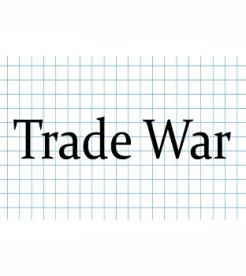On August 20, 2019, the Office of the United States Trade Representative (USTR) published a Federal Register (FR) notice providing the List 4 products that are of Chinese origin and subject to increased tariffs. See 84 FR 43304 (August 20, 2019).
As explained in a previous alert, the tariffs will be imposed in two phases—first, certain products on List 4 will be assessed an additional tariff of 10 percent on September 1, 2019 (referred to as “List 4A”), and second, popular consumer products sourced from China (e.g., cell phones, laptops, video games, certain toys and apparel) will be subject to an additional tariff of 10 percent on December 15, 2019 (referred to as “List 4B”). In addition, USTR removed certain products from the scope of additional tariffs, citing “health, safety, and national security” factors.
From a timing standpoint, products covered on List 4A will be subject to the additional tariff when they are “entered for consumption, or withdrawn from warehouse for consumption, on or after 12:01 a.m. eastern daylight time on December 15, 2019,” regardless of the date on which they were exported to the United States. Similarly, the additional tariff for List 4B products will be subject to the same timing consideration (i.e., if the products are already in transit to the U.S. and are entered on or after December 15, 2019, they would still be subject to additional duties, even though they were technically exported before that date).
The FR notice also provides insights to USTR’s reasoning for effectuating List 4 in two separate phases. Specifically, List 4A “includes tariff subheadings where China’s share of U.S. imports from the world is less than 75 percent for each subheading,” whereas List 4B “includes products where China’s share of U.S. imports from the world is 75 percent or greater for each subheading.” Further, coinciding with the FR notice, President Trump told reporters that the delay in implementing List 4B is intended to mitigate the tariffs’ impact on U.S. consumers during the 2019 holiday shopping season. To that end, the products on List 4A are estimated to have an annual import value of approximately $112 billion. In contrast, products on List 4B are estimated to have an annual import value of approximately $160 billion. Once List 4 is fully implemented, it is estimated that up to 96.8 percent of Chinese imports into the U.S. will be affected by Section 301 tariffs.
The FR confirms that USTR intends to conduct an exclusion request process for List 4, but no additional details were provided.
It is also noteworthy that publication of the FR notice came in the midst of new developments regarding U.S.–China trade negotiations. On August 6, the Treasury Department officially designated China as a currency manipulator due to its devaluation of the yuan, which dropped to its lowest level in a decade. The Department also announced that it would engage with the International Monetary Fund to eliminate the advantages created by China’s latest actions. On that same date, China’s Ministry of Commerce suspended purchases of U.S. agricultural products. On August 23, the Chinese government announced another round of retaliatory tariffs against the U.S. imports. The first batch of tariffs will go into effect on September 1 with tariffs ranging from 5 percent to 10 percent, and the second will go into effect on December 15 with tariffs ranging from 5 percent to 25 percent.
U.S. and Chinese negotiators are due to meet in September for a new round of trade talks but have not yet confirmed a date. Further, the Trump Administration has linked the result of trade negotiations to a peaceful resolution of ongoing protests in Hong Kong demanding democratic reforms of the region. Specifically, the Administration has made it clear that if there is a violent crackdown by the Chinese government on protesters in Hong Kong, the U.S. would be reluctant to continue further trade discussions with China.



 />i
/>i
